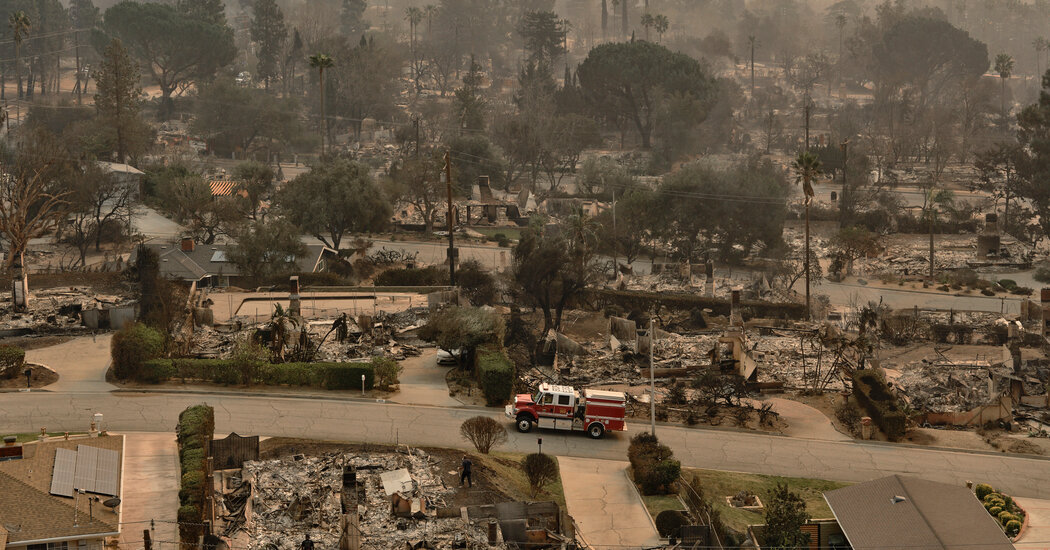The alert came in blaring, hot-pink, all-caps: Be prepared for a “LIFE THREATENING & DESTRUCTIVE WINDSTORM!!!”
The notice on Monday was one in a series of warnings issued by the National Weather Service about the powerful Santa Ana winds that were about to blow through Southern California, which hadn’t seen serious rain in months.
Officials in Los Angeles, a city that is accustomed to treacherous fire conditions, turned to a well-worn playbook. The city predeployed nine trucks in vulnerable areas and called in 90 extra firefighters. The county fire department moved 30 extra engines into the field and called up 100 off-duty firefighters. The U.S. Forest Service brought in trucks and support units, as well as bulldozers, helicopters and planes.
But by Tuesday afternoon, five hours after a fire ignited high in a canyon in the oceanside Pacific Palisades neighborhood, it was clear their preparations would not be enough. As furious wind gusts approaching 100 miles per hour tore through the city and propelled showers of embers that ignited entire neighborhoods, Anthony Marrone, the chief of the Los Angeles County Fire Department, stood at a command post on the edge of the Pacific Ocean.
Blasted by dust and dirt kicked up by the relentless wind, he snapped a picture with his phone of smoke obscuring the sun and looked out at a panorama of flames, smoke and debris. The fire, he thought to himself, looked unstoppable. It was moving “like a funnel, like a speedway,” he said. “I knew that if we had one start, we probably weren’t going to be able to contain it.”
The conflagrations that killed at least 11 people and destroyed thousands of homes have raised questions about whether the dozens of federal, state, county and city fire departments involved in this week’s fire response deployed enough resources — and the extent to which modern firefighting tools are effective against the megafires that have become increasingly common in California over the past decade.
Thank you for your patience while we verify access. If you are in Reader mode please exit and log into your Times account, or subscribe for all of The Times.
Thank you for your patience while we verify access.
Already a subscriber? Log in.
Want all of The Times? Subscribe.


